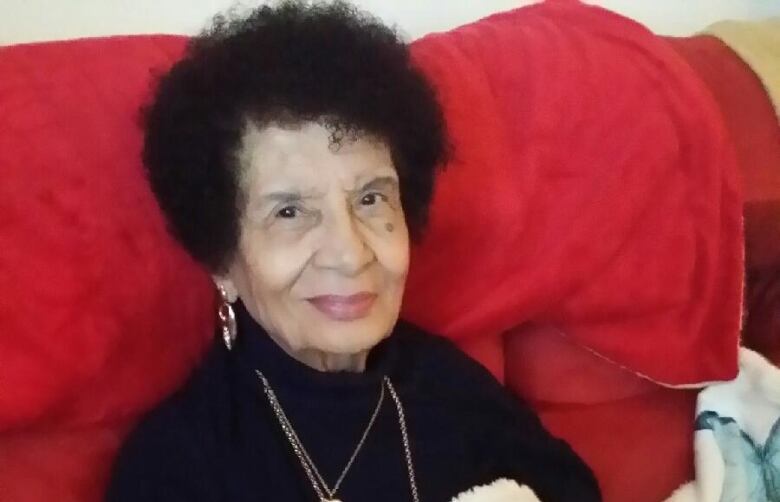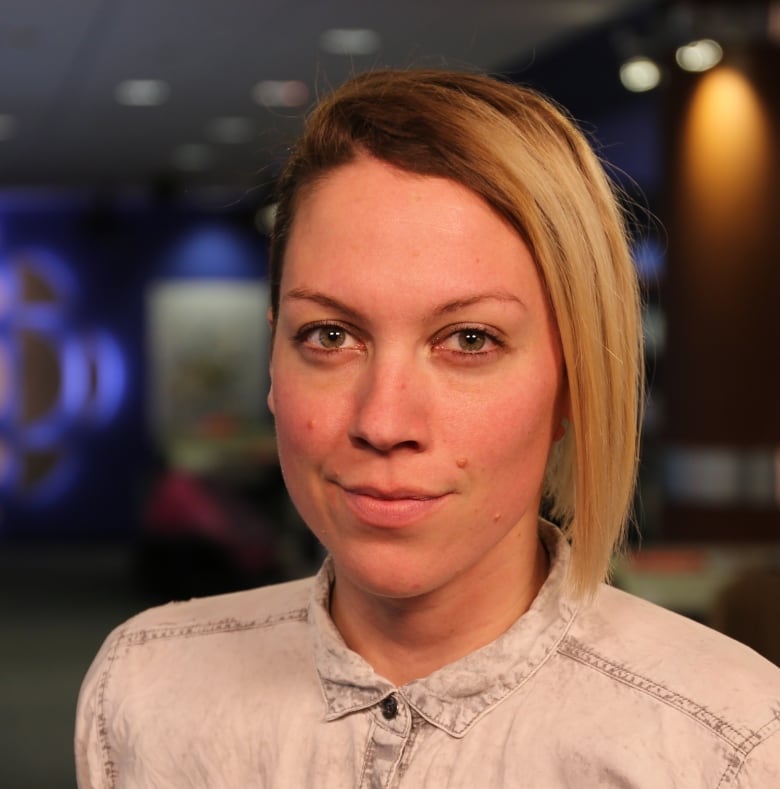How Montrealer Beryl Dickinson-Dash made history as McGill's first Black queen of Carnival
'I was shocked that I got all those votes because it was predominantly a white university,' she said


She was never supposed to be in McGill University's 1949 Winter Carnival queen competition in the first place.
A third-year arts student, Beryl Rapier — then Beryl Dickinson-Dash — hadn't considered entering the contest. She never thought of herself as exceptionally beautiful, and beauty contests just weren't her thing.
And not insignificantly, Rapier is Black. At her majority white university, she didn't even know if she was eligible to be elected queen of its Winter Carnival, an annual celebration that originally raised publicity for the school's winter sports.
Today, Black women wear the crowns for four of the world's biggest beauty pageants: Miss USA, Miss Teen USA, Miss Universe and Miss World. Up until late last year, that list included Miss America as well.
But the pageant world has historically been a white space, and Black women participating — let alone winning — have been few and far between. The first African American Miss America wasn't until 1984, when actor Vanessa Williams won.
It's a similar story here in Canada. Carleton University's Patrizia Gentile knows the long history of Canadian beauty pageants well. She's writing a book titled Queen of the Maple Leaf: Beauty Contests and Settler Femininity that will be out in the fall.

In the post-war period, beauty contests were ubiquitous.
"These beauty contests are about the white nation. They're about exemplifying the values of Canada as a white heterosexual state," said Gentile, an associate professor with Carleton's Institute for Interdisciplinary Studies.
The fact Rapier won at McGill is particularly notable. The school was a "bastion of white elitism" that would have had restrictions, formal or informal, around race and religion, she said.
"The fact that Beryl actually won … is quite extraordinary, as a feat," Gentile said.
Even Rapier's presence at the university was remarkable. At the time, there were 150 Black students out of a total student population at McGill of 8,500. But the vast majority were international students. There would have been only a handful of Canadian-born Black students, and among the handful, hardly any were women.
Nominated without knowing
And yet, 71 years ago, Rapier, the Montreal-born daughter of a railway porter, became queen of one of Canada's most elite post-secondary campuses.
"My soon-to-be husband's roommate … saw I had given my husband a picture for his birthday and his roommate posted the picture, unknown to him and unknown to me," said Rapier, from an NPR-affiliate studio where she lives in Las Vegas. "I was coming up to class one day, and I thought 'Gee, why is my picture here?'"

Leighton Hutson had put Rapier forward to be the Carnival queen, and obtained the 25 signatures required from male students to nominate her. Hutson was also part of McGill's Black community, and thought Black representation in the contest was important. In total, 26 young women received enough signatures to move to the next phase: a ceremonial tea during which the women would be interviewed by radio stations and judged on their ambitions, versatility and personality.
"They cut us down to about 15," Rapier said. "They interviewed us again, and had us walk and talk and do that kind of stuff."
The final five
Rapier was shocked when she then became one of the five finalists — four of whom would eventually be princesses, or ladies in waiting, and one who would wind up queen.
"I had a hyphenated name, Dickinson-Dash. They went in alphabetical order. And when they called my name, I said, 'Oh-my-goodness, well I can always say I'm a princess' ... because I never thought I was going to win anything."

Rapier didn't think she had a chance — but the people around her rallied and embarked on a weeks-long campaign.
The election of the Carnival queen was serious business. Each finalist was assigned a campaign manager. It was voted on by thousands of members of the student body. There were voting booths and scrutineers.
It would have been hard to find a campaign team more dedicated than Rapier's. Her boyfriend's brother sent cheeky telegrams to the university endorsing her, posing as corporations and organizations. Rapier's male friends put up posters in the biggest classrooms. They made sure Beryl Dickinson-Dash was everywhere.
As the days went by, the hype surrounding her campaign grew. A couple of days before the official crowning, the results were leaked: Not only had she won — she'd won by a landslide. The Canadian version of Time magazine said the exact figures weren't released because it might "injure the other girls."
The Carnival queen was crowned at the Montreal Forum, with 8,000 spectators. Mayor Camillien Houde who put the crown atop Rapier's head — shortly after the clock struck midnight on her 21st birthday.
"It was quite something," said Rapier. "I was shocked that I got all those votes because, as I said, it was predominantly a white university and I was shocked; I really was. And I think McGill itself was shocked. I think they were all stunned that they took that corner."
Carnival queen becomes a sensation
She doesn't know why the school was overwhelmingly in her favour.
"Perhaps they were tired of how things were," she said.

Rapier's win was a sensation. She was in all the Montreal papers and Canadian magazines like Time.
There was a self-congratulatory tone in the Canadian coverage, despite there being informal segregation on campus, and that in Montreal, Black people could only work in certain jobs and live in certain parts of town.
Rapier was an even bigger hit south of the border, where Jim Crow laws, enforcing racial segregation, were rampant.
Color magazine sponsored a two-week trip to West Virginia, where internationally renowned artist William Edouard Scott painted her likeness at the state capitol. The painting, titled Spirit of Democracy, was presented to McGill as a token of appreciation from the people of America.

At the time, Rapier didn't necessarily see her involvement in the Carnival queen contest as activism. But still, she came by it naturally. Her parents were well-known in Montreal's tight-knit Black community.
"Both my parents, I must say, always were for the underdog," she said. "Both my father and mother helped people … they were really very much in the community; everybody knew who they were. You just needed to say the Dashes and everybody knew who they were."
Her father met Philip Randolph, head of the Union of Sleeping Car Porters, and later became Secretary Treasurer of the Montreal Local of the Brotherhood of Sleeping Car Porters.

After university, Rapier and her husband, Dunbar Rapier, moved to Scotland, where he attended medical school for six years. They started a family, and when they returned to Canada, Rapier's father suggested they move West.
Narrow view of beauty still persists
The family settled in Edmonton and later Calgary. When their children grew up, Beryl and Dunbar divorced. Rapier eventually moved to California, and later to Las Vegas, where she's lived for three decades.
Rapier's pageant success was more than 70 years ago, but the march toward progress for Black Canadians has been slower than she anticipated. Rapier said she'd prefer us to be well past celebrating Black beauty queens because representation would be the rule, not the exception.
But to this day, there are policies at schools and workplaces around the world that discriminate against Afro-textured hair. That's why having five concurrent Black beauty queens for major contests in 2019 was exceptional. A narrow, western view of beauty has dominated for so long.
But Cheryl Thompson, an assistant professor in the school of creative industries at Ryerson University, says there's more work to be done.

"You want progress? Let me see who's running Miss America. Who is running and owning Miss America? Who is running and owning Miss Universe?" said Thompson, author of Beauty in a Box: Detangling the Roots of Canada's Black Beauty Culture.
"It's fine to put the face, like the illusion of inclusion. You see the face, so you assume there's this huge monumental change. But meanwhile, in the structure, everything is exactly the same."
Rapier is humble and matter-of-fact about her legacy. She doesn't think of herself as a pioneer.
Beauty pageants still aren't her thing. She's more concerned with Black representation in the workplace, or in politics.
"It's with everything…. There's always been actors, there's always been singers, there's always been people of colour that could do these things. But they weren't recognized. We're making a big deal now when they are recognized.
"But they should have been recognized a long time ago, you know what I mean?"
About the producer

Julia Lipscombe is producer on CBC Edmonton's afternoon show, Radio Active.
This documentary was produced by Julia Lipscombe, and edited by Acey Rowe and Julia Pagel.
